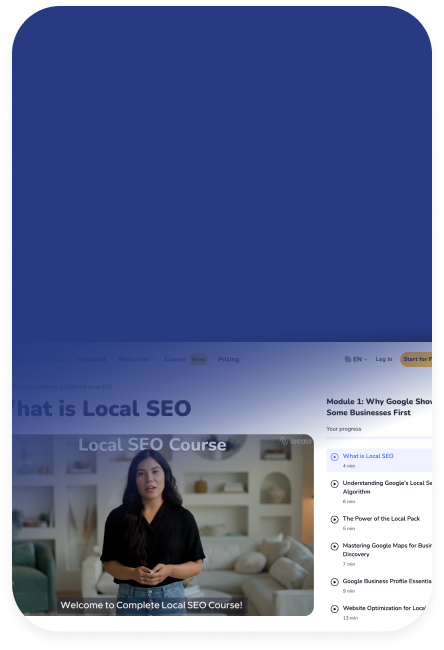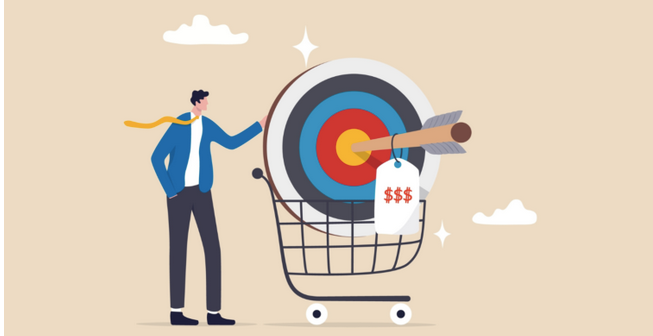
Ready to get more customers calling?
Take FREE Local SEO Course
Available now in English
Conversion rate is a key metric in online marketing that measures the effectiveness of marketing campaigns and web page in converting visitors into customers. It is a percentage indicator that tells you the proportion of website traffic and people who perform the desired action (e.g. total ad interactions), relative to the total amount of visitors.

How to calculate conversion rate?
Conversion rate is calculated by dividing the number of conversions by the number of page views and then multiplying the result by 100. Conversion rate = (Total Number of conversions / Number of visits) * 100
Factors that reduce conversion rates
There are many factors that can result in a lower conversion rate on a website. The following should be noted:
- Unclear CTAs: If CTA buttons are not clear and do not focus the user’s attention, they can lead to confusion or lack of action. Make sure CTAs are bright, visible and encourage potential customers to click.
- Overly complicated conversion process: A long time period or complicated conversion process can discourage users. Shorten and simplify the process to minimise the user actions needed to complete the conversion.
- Lack of mobile responsiveness: If a website is not optimised for mobile devices, users may find it difficult to use it. Make sure your website is responsive, makes an excellent first impression and looks good on different devices.
What kind of conversion rate is good?
There is no one universal ‘‘good’’ conversion rate that is suitable for all business and landing pages. Conversion rate values can vary widely depending on the industry, products, services and expectations. However, typically a high conversion rate means more effective actions and better business results.
Conversion rates are relative and depend on the context. Simple example, in the electronics industry, where the buying process is more complex, the conversion rate may be lower than in the clothing industry, where shopping is less complicated. Likewise, for different types of pages and objectives (e.g. sales, lead generation), the optimal values may differ.
Why is it worth to improve the conversion rate?
Improving the conversion rate is important for several reasons:
- Increase ROI: Efficiency in generating conversions directly translates into return on investment (ROI). Improving the conversion rate allows you to achieve more conversions while minimising costs, making your marketing efforts more effective.
- More efficient budget allocation: Conversion rate optimisation helps identify the most effective campaigns and marketing channels. This allows you to distribute your budget to those areas that deliver the best conversion results, saving resources for less effective strategies.
- Building trust: A high conversion rate demonstrates the quality of the website and the products/services offered. Customers are more likely to make purchases or take up an offer if they see other number of visitors doing the same thing.
Conversion rate optimization
Conversion optimization is about taking action to boost conversions. There are a number of strategies and techniques that can have an impact on increasing this rate:
- Google analytics and user research: Analysing data and studying behaviour of website visitors helps to identify areas for improvement and to understand why users are abandoning the conversion process. This allows you to make appropriate changes, such as improving the user interface, shortening forms or removing barriers that may inhibit conversion.
- Content personalisation: Delivering personalised on-page content that takes into account users’ preferences and needs can significantly increase conversion rates. Using information about users, such as location, purchase preferences or browsing history, allows you to deliver content and offers that are more appealing and relevant to target audience.
- Variant testing: Conducting through a process called A/B testing, i.e. comparing different variations of elements on a page, allows you to identify which solutions generate higher conversion rates.Testing elements such as headlines, CTA (Call to Action) buttons, page layout or forms allows you to continuously improve and optimize your website to increase your effectiveness in visitors being converted into customers.
Summary
Conversion rate is an extremely important indicator that helps marketers understand the effectiveness of their efforts and their website positioning in generating customers. By regularly analysing and increasing conversion rates, you can achieve better marketing results, improve your advertising campaign and increase profits.
![What is Conversion Rate - [Marketing Dictionary]](/assets/img/dictionary-background.webp)
